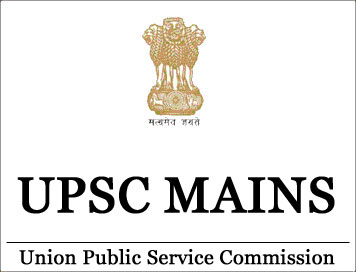(HOT) UPSC Current Affairs 2025 PDF
NEW! The Gist (NOV-2025) | E-BOOKS
(Download) UPSC IAS Mains Exam 2018 - Geography (Paper-1)

(Download) UPSC IAS Mains Exam 2018
Geography (Paper-1)
Exam Name: UPSC IAS Mains Geography (Paper-I)
Marks: 250
Time Allowed: 3 Hours
SECTION "A"
Q.1 Answer the following questions in about 150 words each:
(a) “Landscape is a function of structure, process and stage.” Critique the
statement.
(b) Explain the role of evaporation in the hydrologic cycle.
(c) Describe the causes and consequences of sea level changes.
(d) Distinguish between intrazonal and azonal soils. Describe in brief the
characteristics and importance of azonal soils.
(e) Explain the natural and anthropogenic causes and mitigation measures of
frequent flooding in Mumbai.
Q.2 (a) Evaluate how far Kober's geosynclinals theory explains the
mountain building process.
(b) Critically examine the basis and scheme of climatic classification proposed
by G.T.Trewartha.
(c) Discuss the objectives and principles of environmental education. Describe
the basic concerns of formal and non-formal environmental education in India.
Q.3 (a) Explain the origin, progress and retreat of the Indian monsoon
and discuss its impact on the Indian economy.
(b) “Geomorphological changes are largely responsible for environmental hazards
in the Himalayan region.” Comment with relevant examples.
(c) “Controlling population growth is the sustainable solution to environmental
problems.” Express your views with suitable arguments.
Q.4 (a) Describe the potential marine energy resources with reference
to their benefits, harvestibility and environmental impacts.
(b) Explain the ecosystem approach to environmental management and highlight its
advantages and disadvantages.
(c) Discuss the causes of degradation of tropical rainforests and suggest
remedial measures for their prevention, conservation and development.
UPSC Mains General Studies Study Kit
SECTION "B"
Q.5 Answer the following questions in about 150 words each:
(a) “Geography is a contested and multiparadigmic discipline with a strong
eurocentricity that has only recently been challenged.” Comment.
(b) Discuss the degree of importance of transportation costs as a factor of
industrial location with respect to “footloose industries”.
(c) Explain the concepts of “megalopolis” and “exopolis” with regard to the
growth of cities indicating whether the two can and do overlap.
(d) Write a note on “forward and backward linkages” in Perroux's thesis of
economic growth and regional development.
(e) Outline briefly the “age of mass consumption” as described by Rostow in his
„multi-stage theory of growth.
Q.6 (a) “Areal differentiation has provided the theoretical
justification for studying „regions and regional geography. Comment.
(b) Citing examples from Asia and Europe, comment upon the contexts within which
pronatalist population policies are advanced what could be the implications of
these policies on women's workforce participation.
(c) Comment upon the contributions of D.M Smith in outlining „welfare as a key
focus in the geographies of social well-being.
Q.7 (a) “Famine is a social phenomena rooted in institutional and
political economic arrangements, which determine access to food by different
classes and strata.” Comment.
(b) Provide a brief outline of ideas related to “sense of place” as propounded
by Yi-Fu Tuan and Relph in humanistic geography that emerged in the 1970's.
(c) Elaborate upon the influence of Marxist philosophy on geographical research
outlining key theme addressed by Marxist geographers since the 1970's.
Q.8 (a) “Welfare geography emphasizes spatial inequality and
territorial justice.” Comment with reference to the main ideas and scope of the
subfield.
(b) Discuss critically the manner in which quantitative revolution provided the
methodological foundation for models and modeling in geography.
(c) Discuss in brief the main thesis in “Limits to Growth” (1972) and also
provide a critique of the same.


